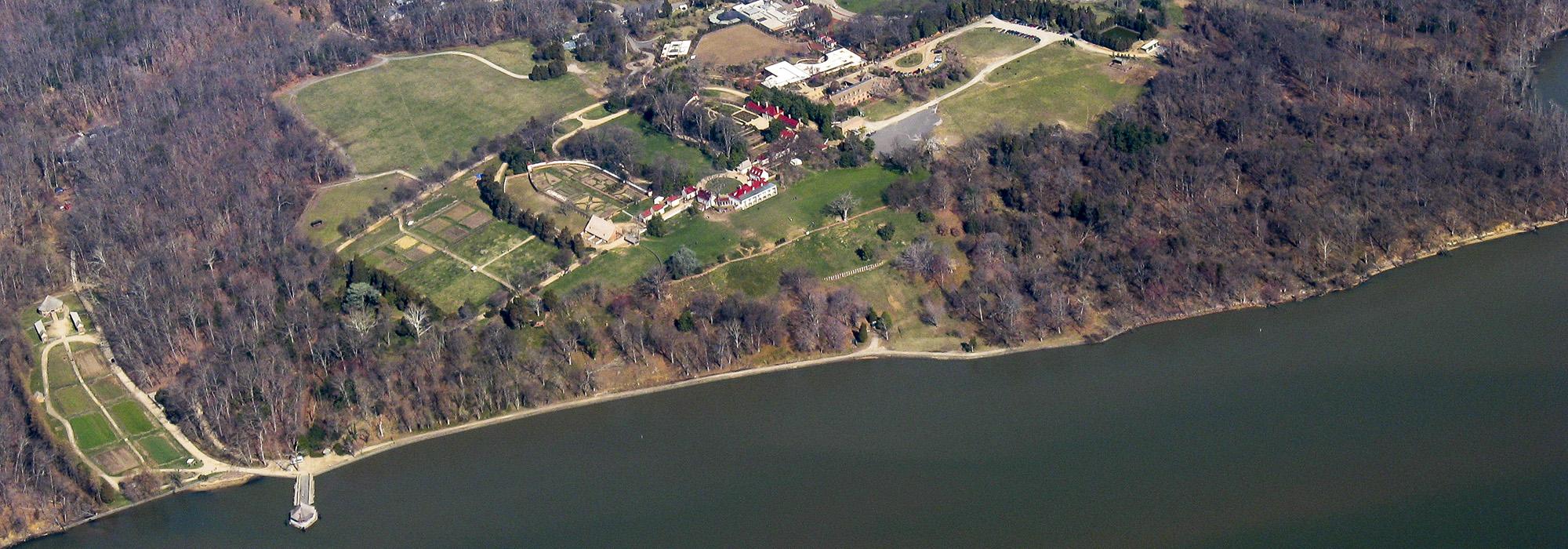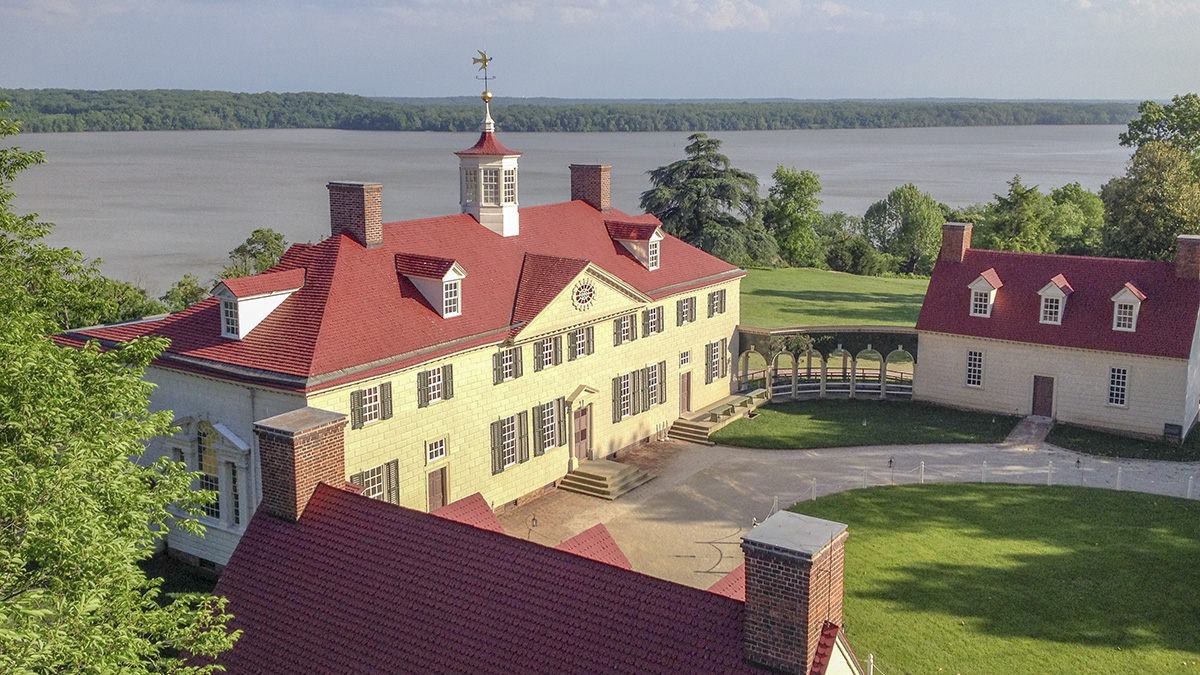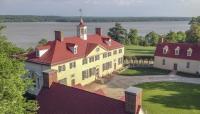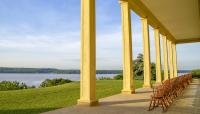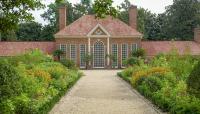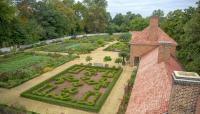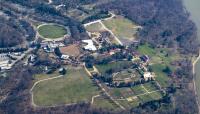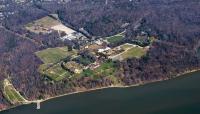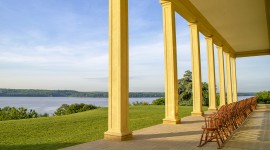Landscape Information
Situated on a hill overlooking the Potomac River, approximately fifteen miles south of Washington, D.C., this plantation was the home of the first U.S. President, George Washington. Washington added several parcels to the land owned by his family since 1674 and was actively involved in designing the estate, ultimately totaling approximately 8,000 acres of fields and woodlands.
The Georgian-styled mansion lies at the end of an expansive central lawn, known as the Bowling Green, which is symmetrically bordered by serpentine avenues, mature shade trees, and an upper and lower garden. The former is a pleasure garden with six planting beds separated by wide gravel and clay pathways, planted with rows of vegetables and fruit trees at the center, bordered by boxwood hedges, ornamental trees, and flowering plants. Its focal point is a greenhouse to cultivate tropical plants. The latter is a kitchen garden found southwest of the Bowling Green, reconstructed by Morley Jeffers Williams according to Washington’s account books in 1935; a fruit garden lies adjacent to the lower garden and features apple, pear, cherry, peach, and apricot trees, as well as a nursery for various grasses, vegetables, and ornamental plants. Washington also maintained a small, experimental botanical garden.
George and Martha Washington, along with other members of their family, are buried in a tomb on the property. At the time of Washington’s death in 1799, 317 African Americans were enslaved on the ornamental farm. This community’s burial ground, used in the 18th and 19th centuries, was commemorated through a monument erected by the Mount Vernon Ladies' Association (MVLA) in 1929. The memorial was rehabilitated in 1983 with students from Howard University’s School of Architecture. From 2014 to 2017, the graves of 70 enslaved laborers were documented through archeological excavations. Today, MVLA owns and maintains 500 acres of the property. Mount Vernon was designated a National Historic Landmark in 1960 and listed on the National Register of Historic Places in 1966.



